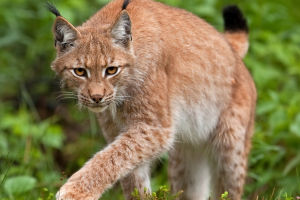Elephants are magnificent creatures that roam the Earth as one of the largest terrestrial mammals. Their immense size and unique physical features make them truly unforgettable.
The evolutionary journey of elephants has been remarkably successful. Once, they were found in abundance across various regions of the world. However, the rise of human activity has inflicted a devastating blow upon these gentle giants.
Today, only three types of elephants remain: the Asian elephant, the African savannah elephant, and the African bush elephant.
The upper jaw of an elephant is equipped with a pair of well-developed incisors that continue to grow throughout their lifetime. In African elephants, these incisor teeth can reach lengths of up to 3.3 meters. Unlike their African counterparts, female Asian elephants do not possess exposed tusks.
Ivory, the material from which tusks are composed, serves as a tool for male elephants to display their prowess. Longer tusks are particularly attractive to female elephants and also act as a deterrent to other male elephants.
The elephant's trunk is a highly versatile appendage, but it is also vulnerable to injury. As a result, elephants often employ their tusks for self-defense and combat. Additionally, the trunk serves as a tool for gathering food. Elephants utilize their sturdy tusks to push down trees, aid their trunks in pulling bushes, and even peel bark.
Remarkably, an elephant's trunk is not only a respiratory and olfactory organ but also possesses tactile functions.
This multifunctional appendage enables elephants to ingest food, drink water, carry objects, and even engage in communication, conveying emotions and information between individuals. With training, elephants can even hold a harmonica with their trunks and produce melodious tunes.
The dexterity of an elephant's trunk is comparable to that of a human hand. Its elongated proboscis effortlessly sweeps fruits, branches, and leaves from trees, retracting them into its mouth.
When an elephant desires to consume grass from the ground, it uproots the vegetation, shakes off the soil from its legs, and proceeds to ingest it. Additionally, the trunk allows elephants to taste and determine whether the food they encounter is palatable.
As herbivores, elephants subsist on a diet primarily comprising plant stems, bark, leaves, fruits, and grasses. To sustain their physical strength and growth, elephants must consume copious amounts of vegetation daily. Their highly efficient digestive system enables them to process plant material rich in cellulose.
Using their trunks, elephants bring food into their mouths, where it is chewed and digested slowly. On average, elephants require approximately 150kg to 200kg of food per day, necessitating a vast territory to locate sufficient food resources.
Elephants typically exhibit matriarchal social structures, where matrilineal clan groups hold significant importance. These groups consist predominantly of an older matriarch, her sisters, and their juvenile offspring.
The matriarch's accumulated wisdom and experience guide the family members in finding food and water sources and occasionally lead them to unexpected favorable locations.
The impact elephants have on their environment is profound. As herbivores, their quest for food influences the distribution and growth of vegetation. Elephants feed on tree bark and leaves, occasionally uprooting entire trees, thereby altering the forest's structure.
Simultaneously, these activities provide habitats and food resources for various other animal species. Furthermore, the nutrient-rich excrement of elephants serves as natural fertilizer, enriching the soil and promoting plant growth.
Elephants are not only awe-inspiring due to their size and physical characteristics but also due to their ecological significance. While their populations have suffered greatly due to human activities, their majestic presence and influence on the environment should be cherished and protected for generations to come.


